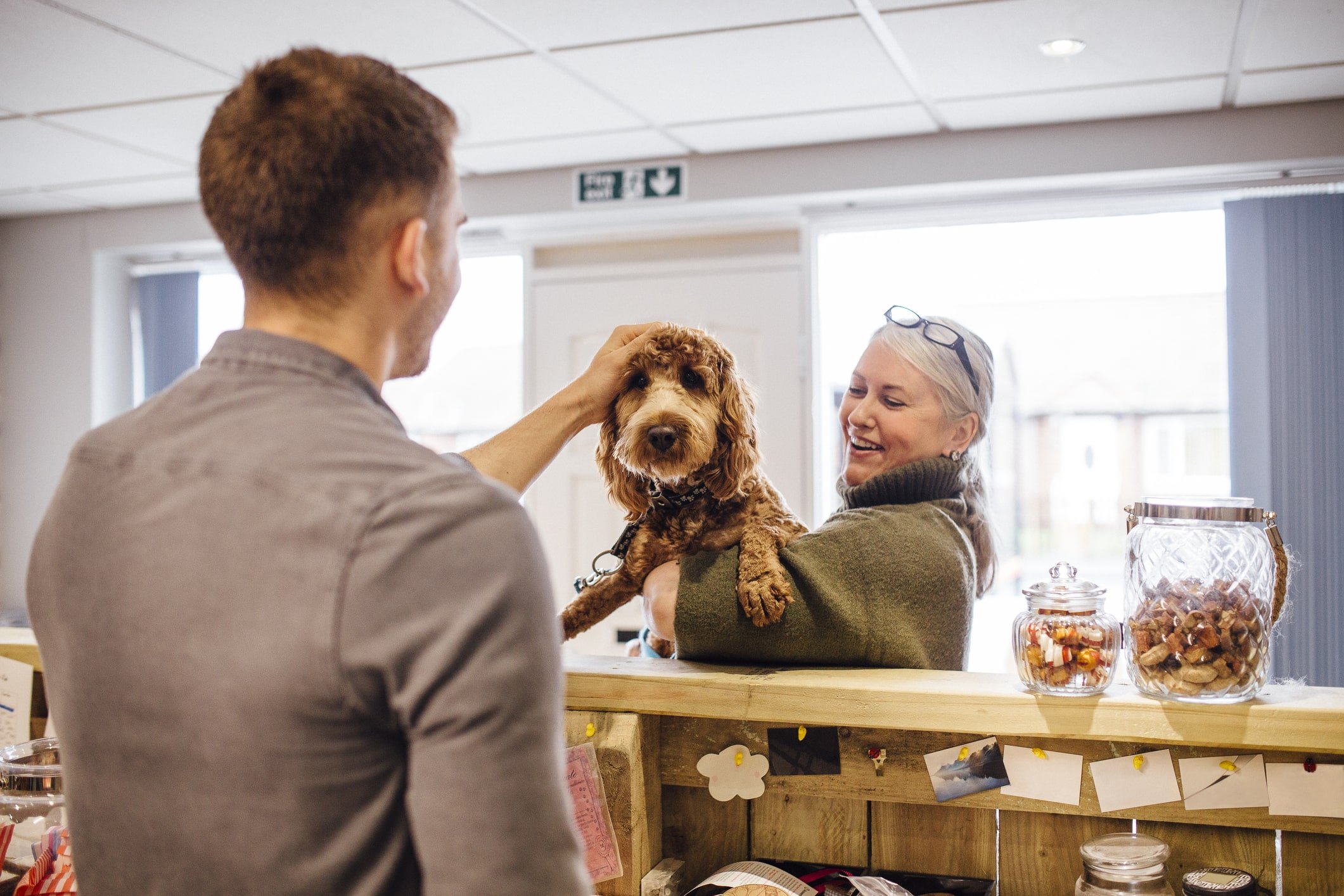WHAT ARE THE BEST WAYS TO INTRODUCE DOGS TO EACH OTHER, TO HUMANS, LITTLE KIDS, ETC. AND DO SO IN A POSITIVE, NON-THREATENING MANNER?
Introducing Puppies To One Another
Introducing dogs to other dogs:
Neutral Territory: ALWAYS Introduce the dogs on neutral territory, so choose a place that the dogs are unfamiliar with such as a park or a beach, where neither of the dogs feels territorial or threatened. Don’t attempt to introduce them in places like their own yard, front porch, owner’s car, etc. even the friendliest, most outgoing dog may interpret this as a threat to defend their ‘territory’, or at the very least may cause them unnecessary anxiety on some level.
Controlled Environment: Keep both dogs on a leash and under control, to prevent any aggression or fights. If you feel it might be necessary, have a second dog-savvy person along to help you control your dog and or the other dogs.
Slow and Steady: Let the dogs approach each other gradually, keeping a safe distance initially. Watch their body language carefully, noticing the obvious signs like baring teeth, snarling, lunging, as well as the more subtle signs like shying away, turning to one side, turning their back, hiding behind you, and intervene if necessary.
Positive Reinforcement: Reward good behavior and calmness, like: greeting each other with uplifted happily wagging tails, sniffing one another and remaining calm, with treats or praise. * Praise is usually best in this case when dogs don’t yet know or feel comfortable with one another because some dogs can be very territorial or express aggression with food/treats.
Introducing dogs to humans:
Calm Environment: Introduce the dog to a new person in a calm and quiet environment. Too many people, strangers, or loud noises can be overwhelming and scary for the dog. Its just a lot of energy for the dog to sift through from and energetic standpoint.
Positive Reinforcement: Encourage the dog to approach the new person with treats or praise.
Body Language: Watch the dog's body language closely. If the dog seems uncomfortable or afraid, don't force interaction. * Since dogs can easily sense and interpret energy, be aware of YOUR own body language and energy. If you are expressing tension, anxiety, etc. your dog will quickly and easily read into this and the likelihood of her/him expressing that to the other dog or human being introduced is more likely. Be calm, cool, relaxed and stay aware, not afraid. Remember, you’re meeting a new ‘friend.’
Introducing Dog To Human Who is a ‘Stranger’ To Her/Him
Introducing dogs to little kids:
Introducing Dog To Little Kid / Toddler
Supervision: Always supervise interactions between dogs and little kids to prevent any accidents to either party.
Positive Reinforcement: It is YOUR responsibility as a Parent/Caregiver/Teacher to ‘Teach’ the child to approach the dog calmly and slowly and without screaming or loudly talking and no erratic waving of arms, hands etc., as this can represent a threat to pretty much any animal, and remember to reward the dog with treats or praise for good behavior. Most dogs, especially younger dogs and puppies genuinely like little kids, but sometimes their frantic, kinetic, and oftentimes chaotic energy and loud voices can be a bit overwhelming, so its’ best to keep interaction with puppies/dogs and little kids at a minimum- at least initially. Always keep these visits supervised. This is for the safety and protection of the people and the puppy/dog so that everyone comes away with a positive experience.
Gentle Touch: Teach the child to pet the dog gently yet firmly and in long strokes/pets over the body, avoiding sensitive areas like the face and ears, and do NOT allow a new person/child to reach OVER a dog’s head. *Think of it ‘as if’ you were a dog or a small child yourself, and a huge creature of a different species, approached you by reaching over your head. What would you think?… How might you react?… * It’s always best to reach UNDER a dog and pet her/his chest area when first being introduced.
Give Space: Teach the child to ‘give the dog space’ when she/he wants to retreat or is showing signs of discomfort or apprehension. Never ever ‘force’ an introduction.
Remember that every dog is different and may require a different approach. Always prioritize safety and observe the dog's body language to ensure that the introduction is going smoothly.
Its up to you to as the Pet ‘Guardian’ and or the Parent/Caregiver of a child, New human on the scene, to Remember and Respect just like you would with a fellow human being, that some dogs may require a different approach based on their personality and past experiences. Even though dogs DO have voices and understand human languages, they do NOT ‘speak’ human languages and cannot let you know what happened to them in the past and what their own unique personalities prefer, like we can do in human languages. It’s up to us as humans to try to understand them, not the other way around.
It's important to allow the quality time to observe and understand the dog's behavior to ensure a safe and happy introduction.




